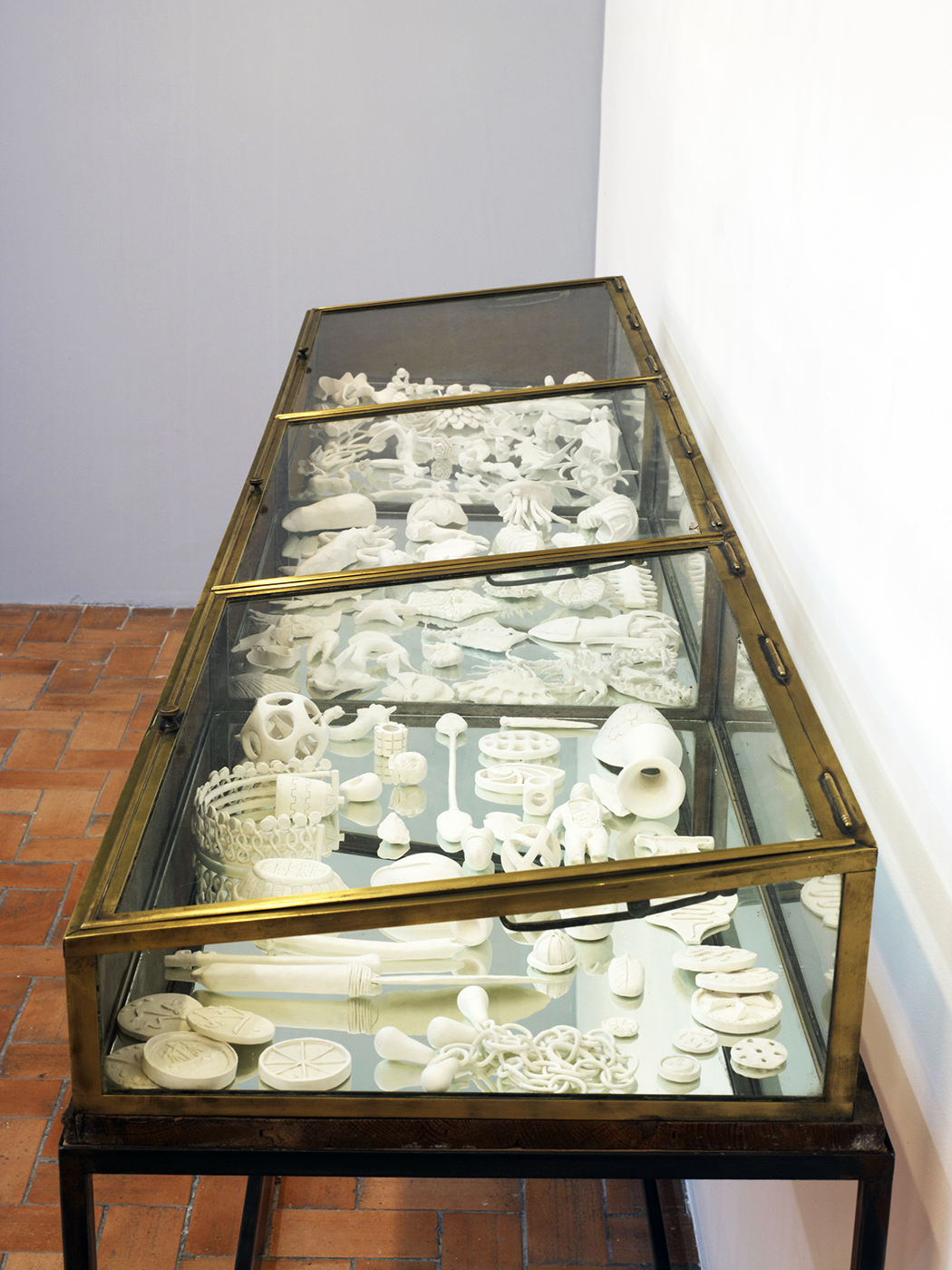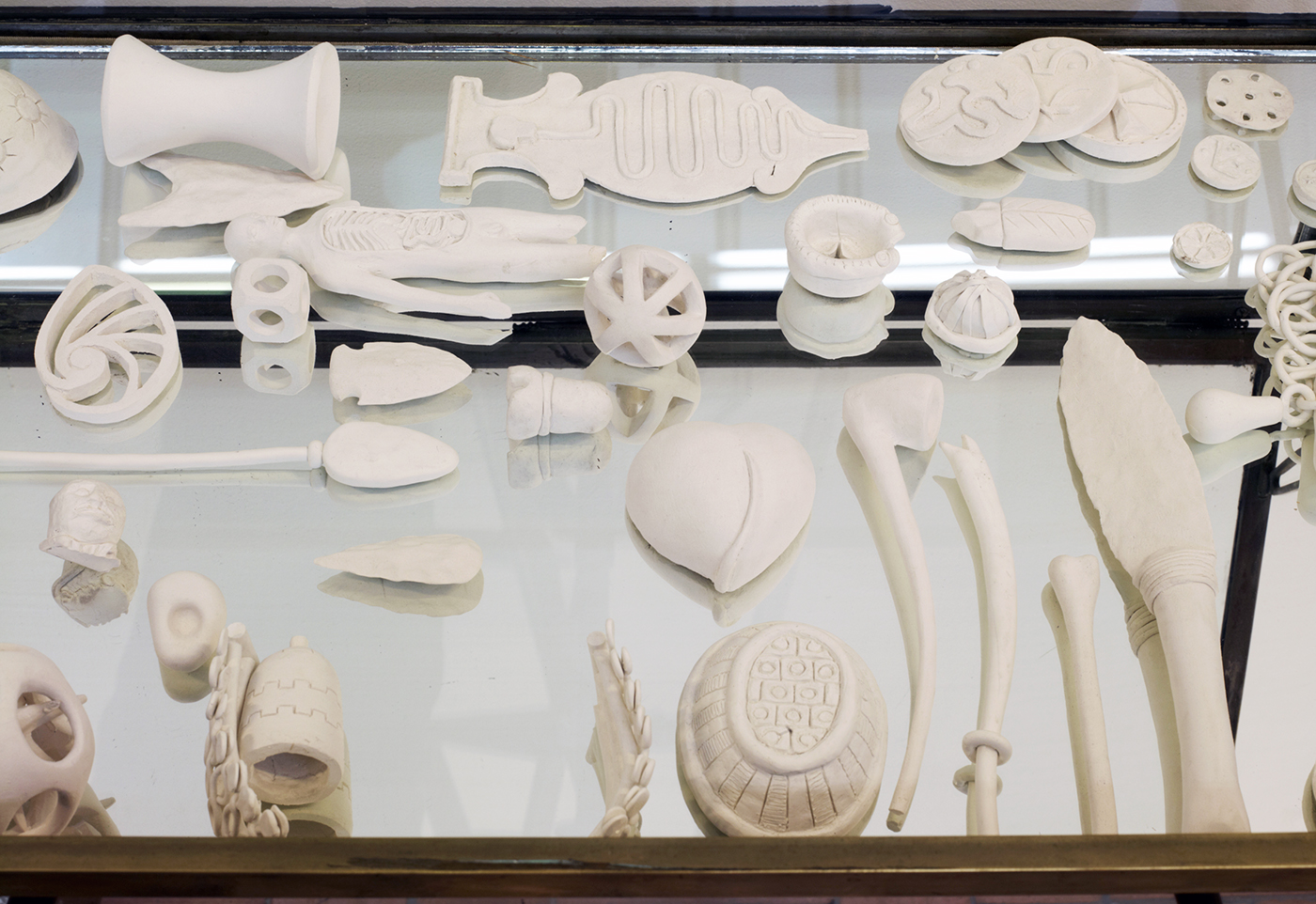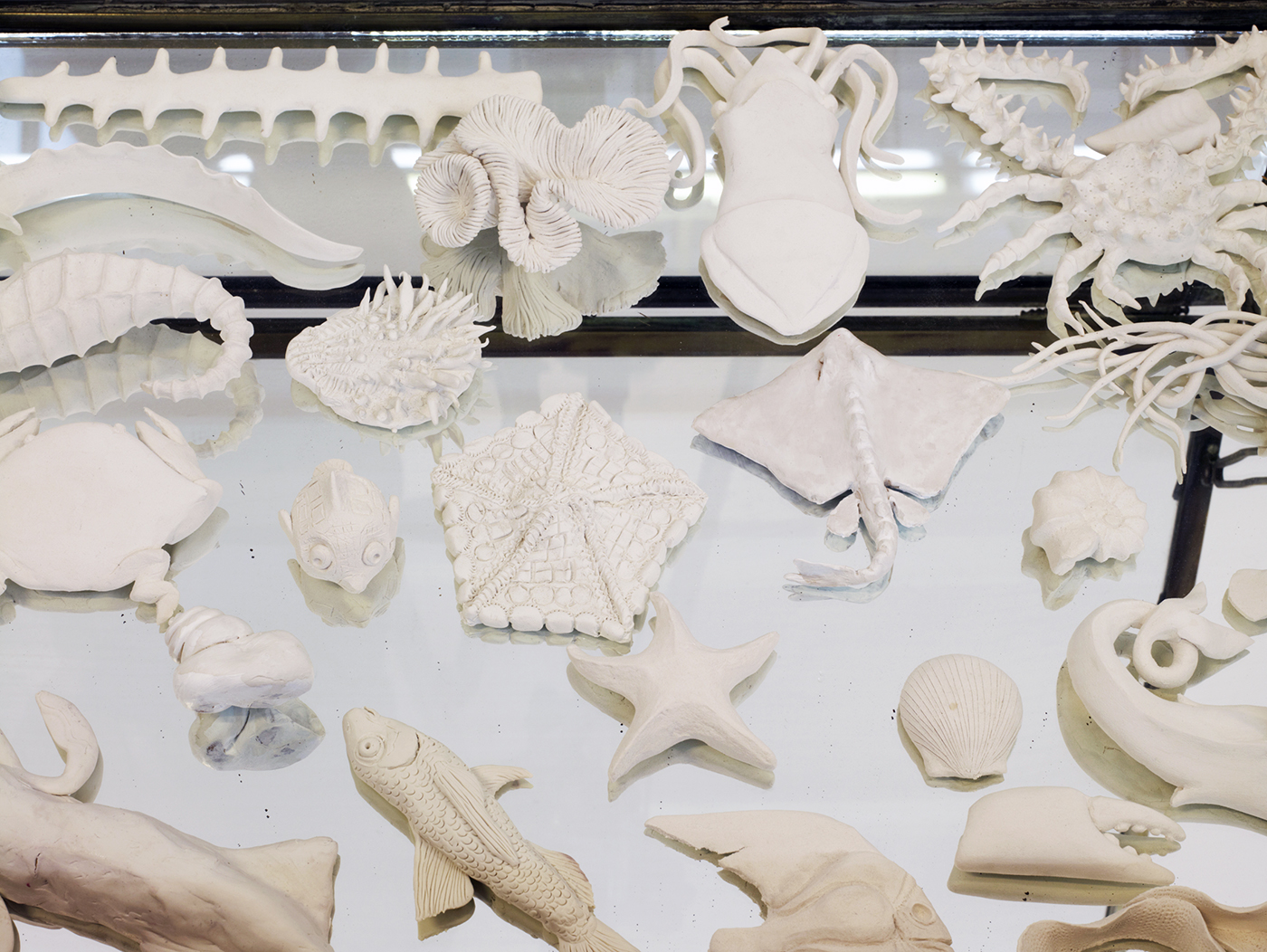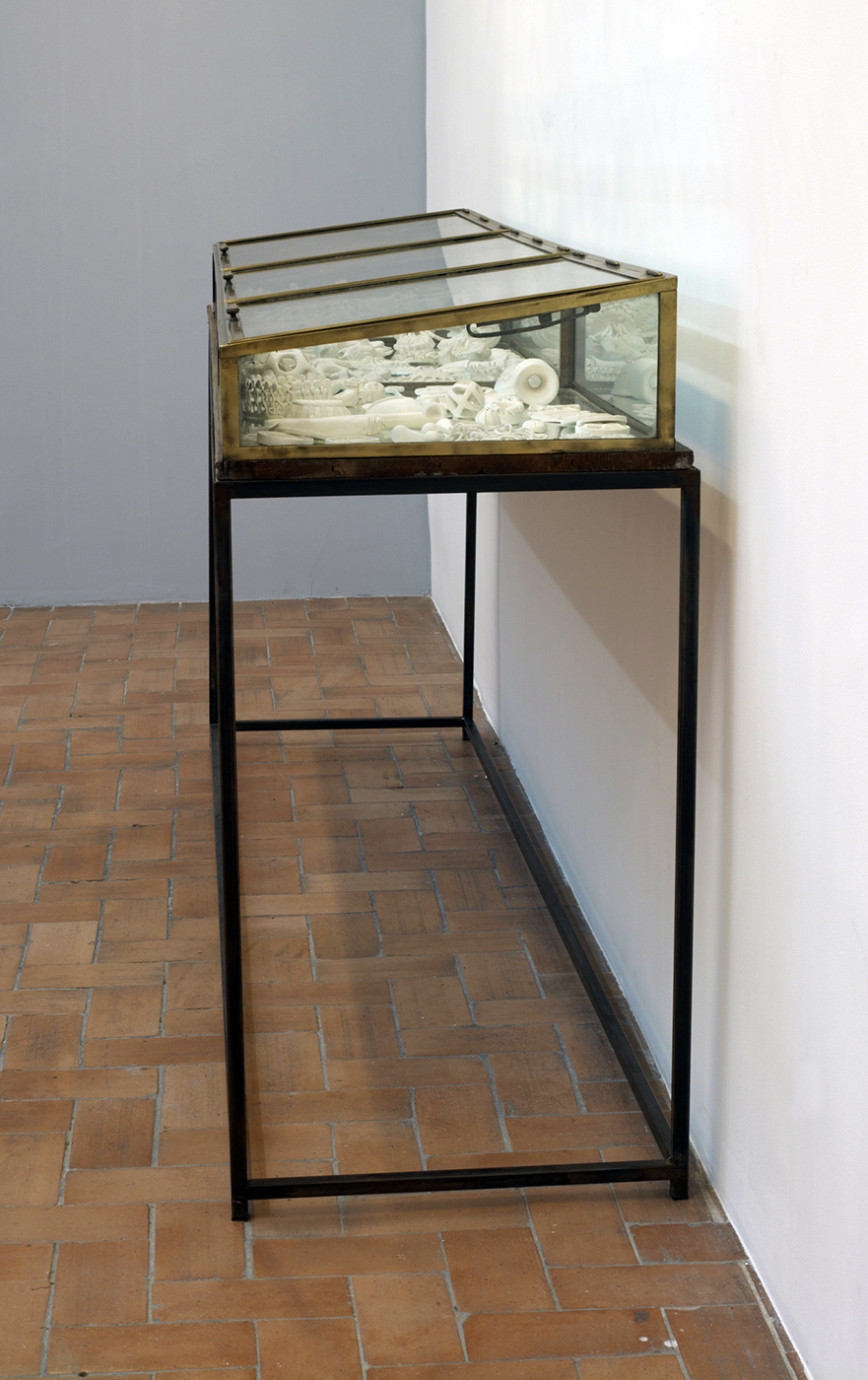Dion

Mark Dion
Arabesques Rarities, 2010
Unique artwork
l'artiste & In Situ - fabienne leclerc, Paris

Mark Dion
Arabesques Rarities, 2010

Mark Dion
Arabesques Rarities, 2010

Mark Dion
Arabesques Rarities, 2010

Mark Dion
Arabesques Rarities, 2010
An Arabesque is an artistic motif that is characterized by the application of repeating geometric forms and fancifullyconbined pattern; these forms often echo those of plants and animals.
Assistants in the "studio/workshop" of Mark Dion were instructed to produce sculptures based on engravings from the 17th and the 18th Century catalogues that were used as guides in the formation of Curiosity Cabinets. The threedimensional sculptural reproductions, again in white day or papier-maché, are displayed in a tree-partite setting, where the sections are concerned with plant life, marine life; and anthropological or material culture.
Jean Baudrillard (1929-2007) argues that a simulacrum is not a copy of the real, but becomes thruth in its own right: the hyperreal. Where Plato (428/427 BC-348-347 BC) saw two steps of reproduction - faithful and intentionally distorted (simulacrum) - Baudrillard sees four: basic reflection of reality; perversion of reality; pretence of reality (where there is no model); and simulacrum, which "bears no relation to any reality whatsoever."
Gilles Deleuze (1925-1995) takes a differing view, perhaps one closer to Dion's own, seeing simulacra as the avenue by which accepted ideals or " provileged position" could be "challenged and overtuned".